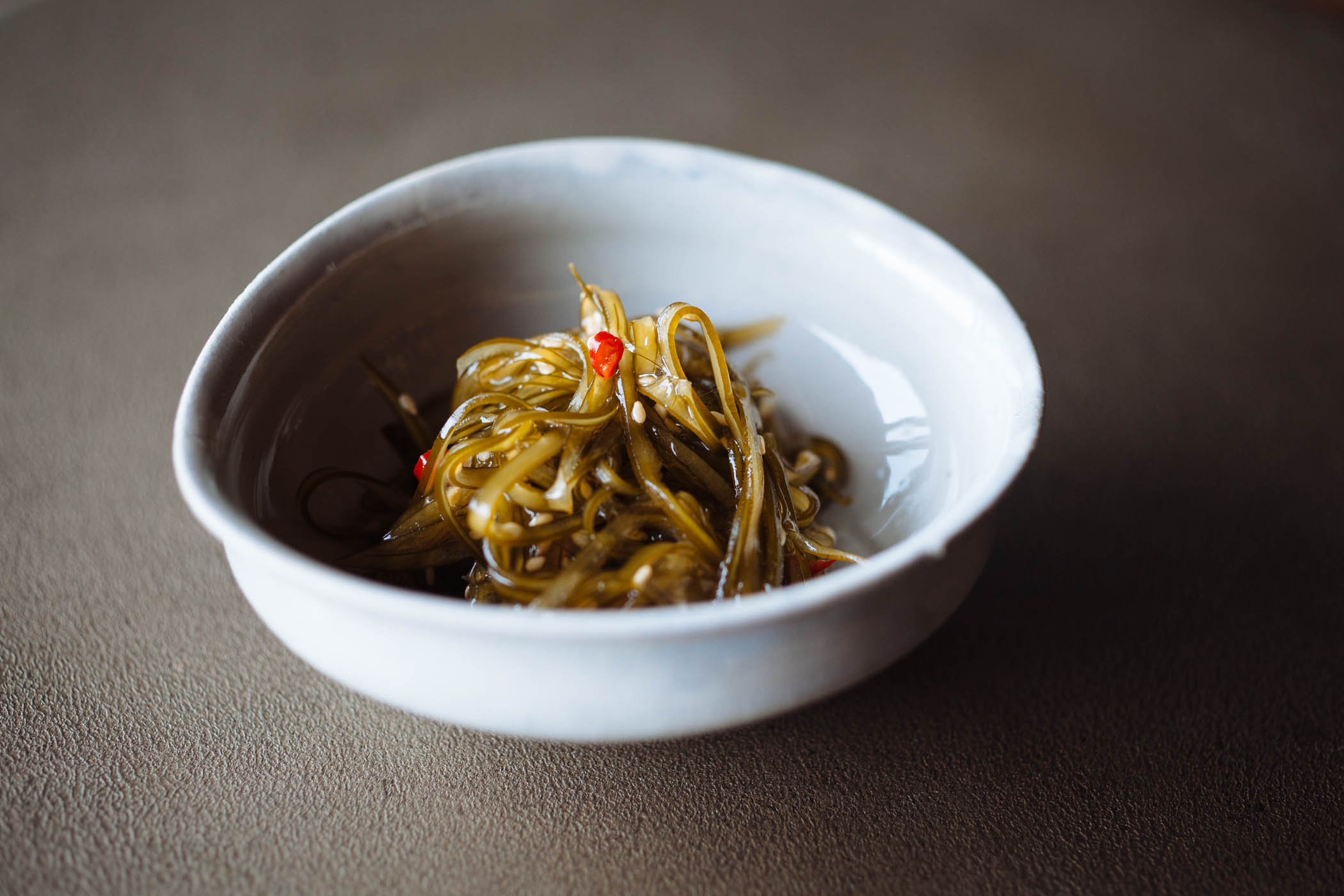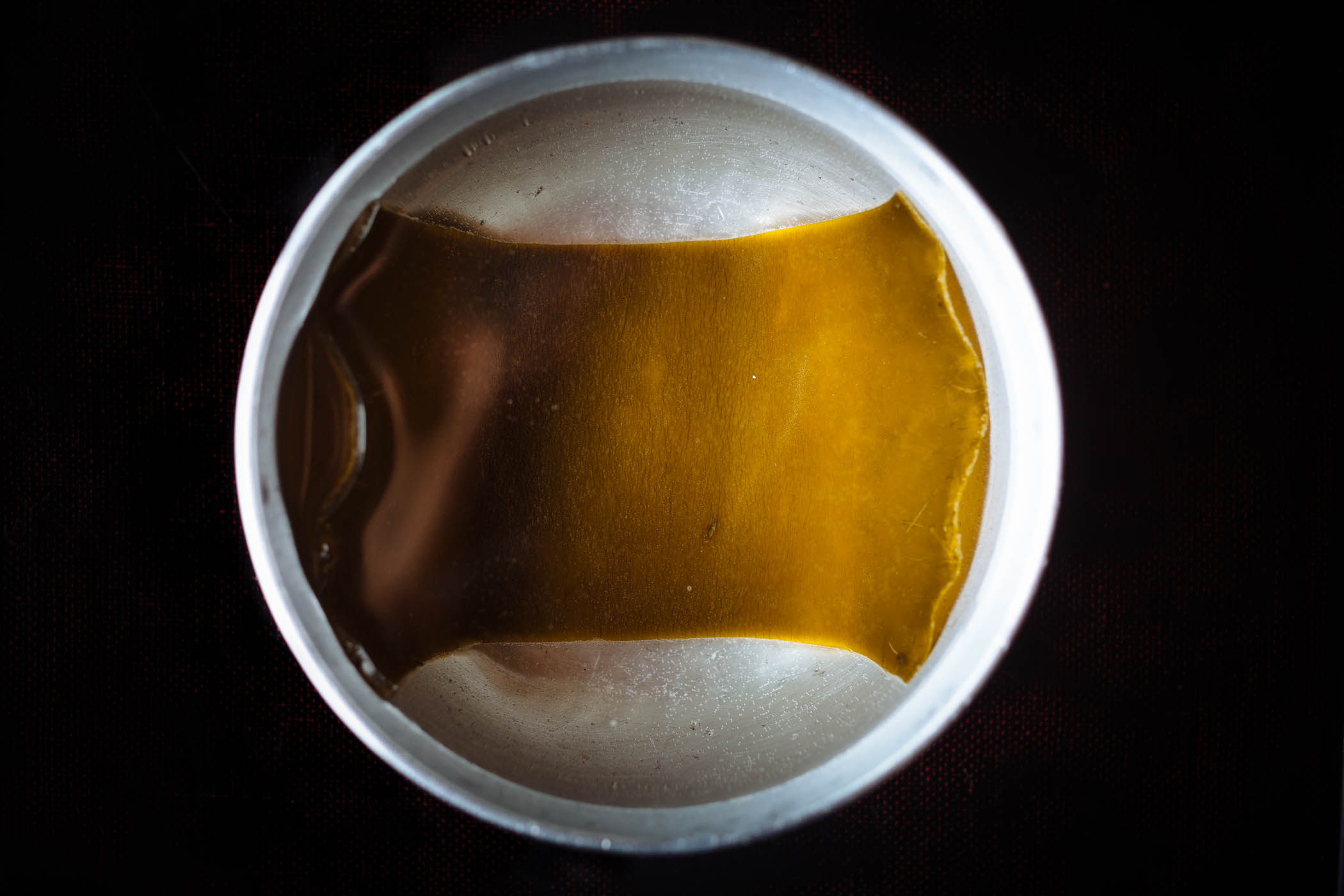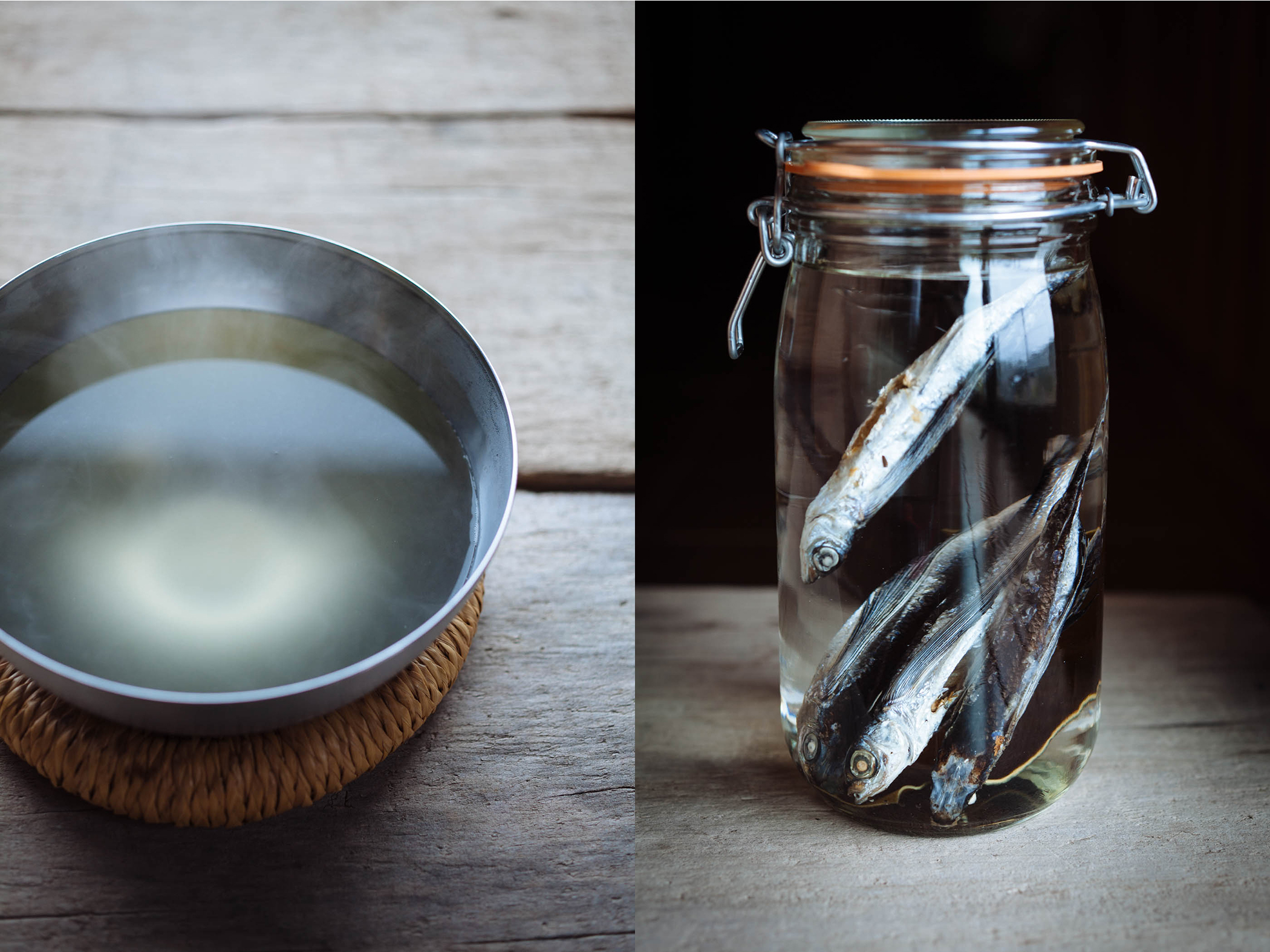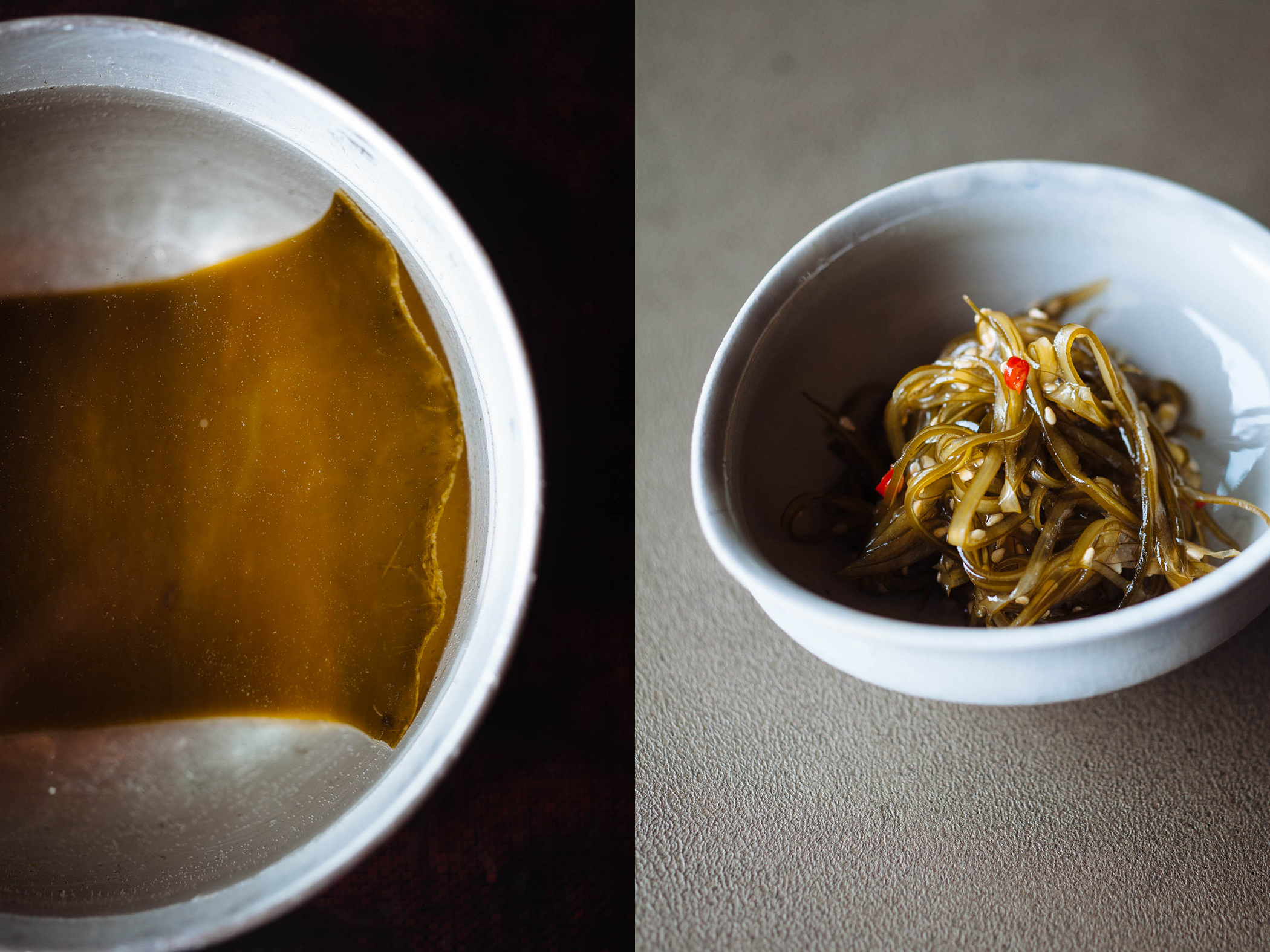A kombu appetizer to open any meal

As the sun sinks behind our hill, the collective cry of cicadas swells to a crescendo before fading with the light. We are allowed a moment of quiet in the gloaming before the gentle reverberation of crickets’ wings start pulsing through the late evening air. These days a high, hot sun bakes the air all day and it still feels like we are at the height of summer. But the rice bows low and golden over dry cracked earth as early chestnuts tumble from high limbs. Autumn is well underway.
No matter the season, daily meals in Japan start with dashi. Kuniko is sparse with her praise but she’ll often praise my dashi which, after all, I learned to make from her. The kombu flavor whispers more than shouts. Jouhin, she’ll say, calling it elegant. That light, delicate, clear taste – that perfect extraction and presentation of an ingredient’s purest elements – that’s jouhin. She adores a broth that offers its flavors but doesn’t insist upon them, discernible but not conspicuous. What a perfect definition of elegance in any form, what a good philosophy for how to be in the world.


It’s not an exaggeration to say that dashi is the foundation of Japan’s traditional cuisine, its most fundamental seasoning, and thus if the flavor of dashi is lost, washoku is lost. But the future of dashi faces challenges on both the supply and demand sides. Warming waters threaten the supply of superlative kombu growing off the coast of Hokkaido. Reports indicate that naga-kombu could disappear as soon as 2040, with ma-kombu to follow by 2090. And when the kelp dies out it takes with it a symbiotic chain of life that depends on the habitat it provides, including sea urchins and sea otters. The 2019 harvest of kombu was less than 35% of what it was 30 years ago and the price continues to increase, making it harder for consumers to procure and afford this essential ingredient for good quality dashi.
On the demand side it’s not just dwindling supplies and rising costs that threaten the future of dashi. It’s a growing notion, supported by Japan’s ever expanding convenience-oriented market, that making dashi is tedious and time consuming. An omnipresence of dashi packs, instant dashi delivered in the form of a tea bag sort of a pouch that is steeped in warm water, now dominate the dashi market. They are touted as time saving and if it makes it easier for some, the packs themselves are of less concern than the ingredients they shroud. Many are a blend of inferior ingredients padded with artificial flavorings and preservatives that counter the very healthful properties of dashi.


Dashi made of katsuobushi, the shaved flakes of stone hard dried skipjack tuna, is perhaps most closely associated with Japanese cuisine. But dashi ingredients vary throughout this small archipelago and regional dashi both defines and distinguishes regional flavors. In the north, where kombu grows in the surrounding cold ocean waters, dashi is extracted from a single patch of kelp. In the regions around Tokyo and Kyoto, katsuobushi is ubiquitous. Moving west towards Hiroshima, and south from there, you start to see prevalent use of iriko, dried sardines or other small fish. Here in western Kyushu, in the vicinity of Nagasaki, you’ll find many of us using ago (flying fish), aji (horse mackerel), or another small fish called esso.
I often wonder why people are overwhelmed by the idea of making dashi from raw ingredients. Whether using a dashi pack or individual ingredients, the process is the same – open a package, add its contents to water, let it steep, then strain it. Katsuobushi dashi requires a little attention but takes no more than 5 minutes to make. In the case of iriko one can simplify even further by making mizudashi. This preferred method for drawing dashi simply requires setting a piece of kombu alongside a handful of fish in a large jar of cold water in the evening to steep in a cool spot overnight. In the morning, when the the fish and kombu are removed, you have dashi.

But if you’re caught without dashi before a meal, it’s easily prepared in the length of time it takes to turn on the radio, fix a drink, and decide what to make for dinner. I place a length of dried kombu into a pot of water on low heat and add four or five dried ago, flying fish. If I were in more of a hurry I’d break them in half to hasten infusion, but late summer evenings still allow for lingering. When it nears simmering, I remove the konbu and set it aside, turn the flame off and let the fish steep for another ten minutes before removing them as well. The very same fish and kombu simmered a second time in a pot of fresh water (for a bit longer this time) gives you ni-ban dashi, a second draw of stock that is less refined and precise in flavor but still entirely good for less delicate applications in dishes with stronger seasoning.
Whether they’ve given their essence to one or two extractions of dashi, we never throw away the spent ingredients. We give the fish portion to the cats as it makes their coats shine and we eat the kombu. Fully reconstituted, thick and velvety, we slice it into the thinnest strips and dress it with rice vinegar, sesame oil, soy, and raw white sesame seeds. It’s our zensai, a small dish often made with remnants from cooking, that opens the meal with sake. Meals that begin like this with sips and light snacking feel fuller, longer and rounder. If I’m running behind it offers my company something to savor while I take a few more minutes in the kitchen. Otherwise I’ll sit with everyone gathered, enjoying that delicious moment when the day’s work is done and I can relax into the evening meal.
